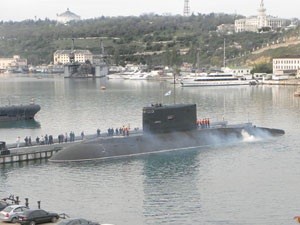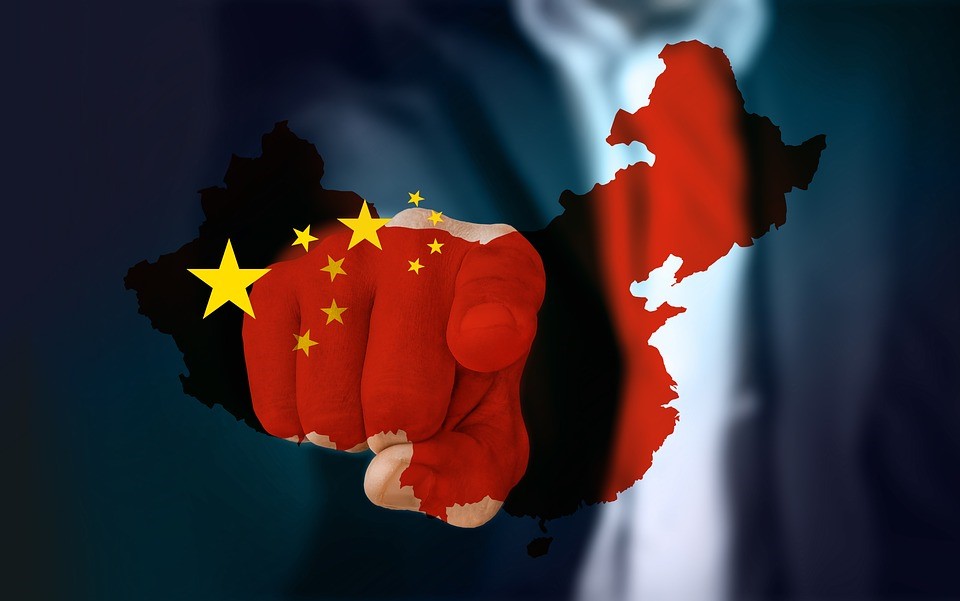In our first article on Special Counsel Jack Smith’s June 2023 Indictment of former President Donald Trump, we discussed the illegal search of Mar A Lago, and the necessity for the suppression of all evidence seized as illegally obtained “fruit of the poisonous tree.” In our second, we examined the interaction between the Espionage Act, and the Presidential Records Act, as well as the potential defense that the former President had legal possession of the allegedly classified documents recovered during that illegal search and seizure.
Today we examine an extremely troubling aspect of this Indictment – the apparent violation of Donald Trump’s right to counsel under the Sixth Amendment to the United States Constitution.
As is well known, the accused in every criminal matter has a right to counsel, and one important aspect of the relationship between an attorney and their client in known as the Attorney-Client Privilege. As described by Stephen M. Forte, Esq., the Managing Partner of Smith, Gambrell & Russell, LLP, “(t)he attorney-client privilege is the oldest privilege recognized by Anglo-American jurisprudence…(a)t its most basic, the privilege ensures ‘that one who seeks advice or aid from a lawyer should be completely free of any fear that his secrets will be uncovered.’ Thus, the underlying principle of the privilege is to provide for ‘sound legal advice [and] advocacy.’ With the security of the privilege, the client may speak frankly and openly to legal counsel, disclosing all relevant information to the attorney and creating a ‘zone of privacy.’ In other words, shielded by the privilege, the client may be more willing to communicate to counsel things that might otherwise be suppressed. In theory, such candor and honesty will assist the attorney in providing more accurate, well-reasoned professional advice, and the client can be secure in the knowledge that his statements to his lawyer will not be taken as an adverse admission or used against his interest.” (Citations omitted.)
Yet, if we review the June 2023 Indictment of former President Trump, we find these allegations:
“On May 23, 2022, Trump met with Trump Attorney 1 and Trump Attorney 2 at the Mar A Lago Club to discuss the response to the May 11 Subpoena (issued by the Justice Department). Trump Attorney 1 and Trump Attorney 2 told Trump that they needed to search for documents that would be responsive to the subpoena…Trump, in sum and substance, made the following statements…as memorialized by Trump Attorney 1…’Well, what if we, what happens if we just don’t respond at all or don’t play ball with them?’…’Wouldn’t it be better if we just told them we don’t have anything here?’…Well look isn’t it better if there are no documents?'”
We also find these allegations as well;
“Trump Attorney 1 located 38 documents with classification markings inside the boxes, which Trump Attorney 1 removed and placed in a Redwell folder…(a)fter Trump Attorney 1 finished sealing the Redwell folder…Trump and Trump Attorney 1 then discussed what to do with the Redwell folder…Trump made a plucking motion, as memorialized by Trump Attorney 1…’well okay why don’t you take them with you to your hotel room and if there’s anything really bad in there, you know, pluck it out’…”
If respect is paid to the attorney-client privilege, then Trump is entitled to ask his lawyers any question he wants, and not have those questions used against him. Further, nowhere in the Indictment is “Trump Attorney 1’s” response reported. More likely than not, “Trump Attorney 1” would have explained to the former President why documents would need to be produced in response to the Justice Department’s subpoena. As Journalist Michael Tracey states, “‘What happens if we just don’t respond’ is exactly the type of question you’d expect a client to ask his lawyer in the context of privileged, confidential communications. But here the DOJ decided to ‘seize’ those communications and present them as evidence of criminal wrongdoing.”
But there is a more fundamental question that requires an answer – Where did Special Counsel jack Smith get this information from in the first place? Obviously from “Trump Attorney 1,” that is, Evan Corcoran, who was forced by the DC Circuit Court of Appeals “to testify and hand over records to special counsel Jack Smith’s team investigating Trump’s handling of classified records after leaving the White House.”
The higher court had been asked to overturn the order of D.C. District Judge Beryl Howell, who had “ruled that prosecutors in special counsel Jack Smith’s office had made a ‘prima facie showing that the former president had committed criminal violations,'” according to sources who described her…order, and that attorney-client privileges invoked by two of his lawyers, Corcoran and Jennifer Little, could therefore be pierced.”
But didn’t we just review the nature of the Attorney-Client Privilege? What happened to the “zone of privacy” that allows a client to “be secure in the knowledge that his statements to his lawyer will not be taken as an adverse admission or used against his interest?”
As described by the Blog, Above the Law, “Judge Beryl Howell, in her last act as chief judge of the District Court in DC, found that the crime-fraud exception to attorney-client privilege applied to certain aspects of Corcoran’s relationship with Trump, and she ordered him to testify to the grand jury investigating the wrongful retention of government documents at Mar-a-Lago. She also ordered him to hand over certain communications, including transcripts of recordings, immediately.”
And just what is the “crime-fraud exception?”
“The attorney-client privilege does not cover statements made by a client to their lawyer if the statements are meant to further or conceal a crime. For this exception to apply, the client must have been in the process of committing a crime or planning to commit a crime…(s)ome of the crimes that often arise in this context include crimes that are meant to obstruct an investigation or ongoing prosecution…(a)n important distinction separates communications regarding a past crime from communications regarding an ongoing or future crime. The crime-fraud exception usually applies only to communications regarding ongoing or future crimes.”
This leads to the next question – what “ongoing or future crime” was being committed “to obstruct an investigation or ongoing prosecution?”
According to the June 2023 Indictment, the “obstruction” involved a certification made by Trump’s Attorney’s that a search of Trump’s Records was conducted, and all that was found were the 38 pages turned over to the Justice Department, when in fact, Trump allegedly hid more documents in other Storage Boxes that were not searched by his lawyers.
The Indictment goes through a convoluted series of events that make it appear that Trump withheld some Storage Boxes from his attorneys, with the implication that this was done in an effort to lead Trump’s counsel to make a false certification that all records responsive to the subpoena had been turned over to the Justice Department.
The indictment concludes by stating that the search of Mar A Lago revealed an additional 102 documents with varying degrees of classification. However, the Indictment does NOT state that these documents were recovered from any boxes which were allegedly kept from Trump’s attorneys, nor is there a single word of explanation as to why the former President would want to turn over some classified documents to the Justice Department, but not others.
“It’s rare that a court breaks attorney-client privilege, even rarer that the reason is that the lawyer was wittingly or unwittingly contributing to a crime or fraud,” according to The Bulwark. “(W)hen Judge Beryl Howell told attorney Evan Corcoran that he had to provide evidence about Trump’s obstruction of justice in refusing to return classified national security documents stored at Mar-a-Lago…public reports suggest that Trump deliberately misled his lawyer. He is said to have lied to Corcoran about the completeness of his search for classified documents at Mar-a-Lago—a lie that Corcoran then dutifully passed along to the government as the truth.”
Yet, “(t)he invocation of the crime-fraud exception is remarkable because of the nature of its origins and the deep reluctance with which it is approached by the legal profession. The complexity of the doctrine of crime-fraud…has obscured how genuinely exceptional these events are…we might think that an attorney would be an especially good source of information about a client. But even so, we see a higher value in protecting attorney-client communications against examination.”
In other words, the attorney-client privilege is sacrosanct, and the crime-fraud exception is a very rare exception to be employed. If so, one would think it would only be invoked when a client is planning an extraordinarily serious crime; trying to hide his plan to commit a murder for instance, or steal an extremely large amount of money by defrauding a bank.
One would not expect such a rare exception to be applied over whether or not an attorney properly certified that some documents were turned over to the Justice Department or not, even if those documents are allegedly classified. This is particularly true when it is unclear whether the former President was hiding documents, and for what purpose – or whether Trump had legal possession of those documents.
As the situation is described by Mark Levin, “Attorney-client privilege is crucial. The crime-fraud exception is a rare exception. It’s not supposed to be regularized or routine, or we cease to have the ability to have effective representation of counsel…Mass murderers, terrorists, what have you – attorney-client privilege is rarely pierced when it applies to them, and yet it’s been pierced in a serial nature when it applies to Donald Trump…(t)his is just more evidence of the unraveling of our liberties…(o)ur civil liberties are being violated…(i)f they can do this to Donald Trump or if they can drag lawyers in front of grand juries…take their testimony…Well, what’s left?”
Unfortunately, this is not the first time Special Counsel Jack Smith has shown a lack of respect for the attorney-client privilege. In 2013, former Arizona Congressman Rick Renzi, a Republican, was convicted of extortion and bribery. “Renzi, who was granted a presidential pardon by Trump, detailed illegal wiretaps, prosecutorial misconduct, and a blatant disregard for the sanctity of attorney-client privilege,” by a lawyer working for the man who prosecuted him – Jack Smith.
“Renzi recounted that Smith’s team had illegally wiretapped his attorney 41 times. The team not only lied about their activities, but they also tried to utilize the acquired evidence against him. A 2019 legal filing on Renzi’s behalf described ‘widespread misconduct’ and deliberate recording of ‘privileged phone calls.’ Though the actions were carried out by a member of Smith’s prosecutorial team, Smith was responsible for overseeing his team and holding them accountable.”
As described in PJ Media, “(j)ust as in Renzi’s case, the DOJ is allegedly trying to use conversations protected by attorney-client privilege against Donald Trump. Renzi explained that Trump’s…attorney-client privilege was infringed on. Smith (claims) that the ‘former president was trying to commit a crime by asking’ a certain question, even though it was ‘normal and proper’ attorney-client privileged communication, Renzi stated…Renzi is not the only one to protest against the violation of attorney-client privilege in Trump’s case. ‘Timothy Parlatore, who until recently worked as a criminal defense attorney for former President Donald Trump,’ said Jack Smith’s team crossed a ‘red line’ while Parlatore was testifying before a grand jury…(t)he lawyer’s complaint? That questions he was asked infringed on attorney-client privilege.”
“Parlatore stated that, in his opinion, it was ‘clear that the government was not acting appropriately and made several improper attempts to pierce privilege and, in my opinion, made several significant misstatements to the [grand] jury, which I believe constitutes prosecutorial misconduct.’ Not prosecutorial misconduct from the unimpeachable Jack Smith and team! Oh, wait — that’s exactly what they were accused of in Renzi’s case…”
These are extremely serious allegations of misconduct against Jack Smith and his prosecution team, but the evidence of prior violations of a criminal defendant’s right to counsel exist. Could Smith be repeating this illegal pattern in his prosecution of former President Trump?
Judge John Wilson (ret.) served on the bench in NYC









